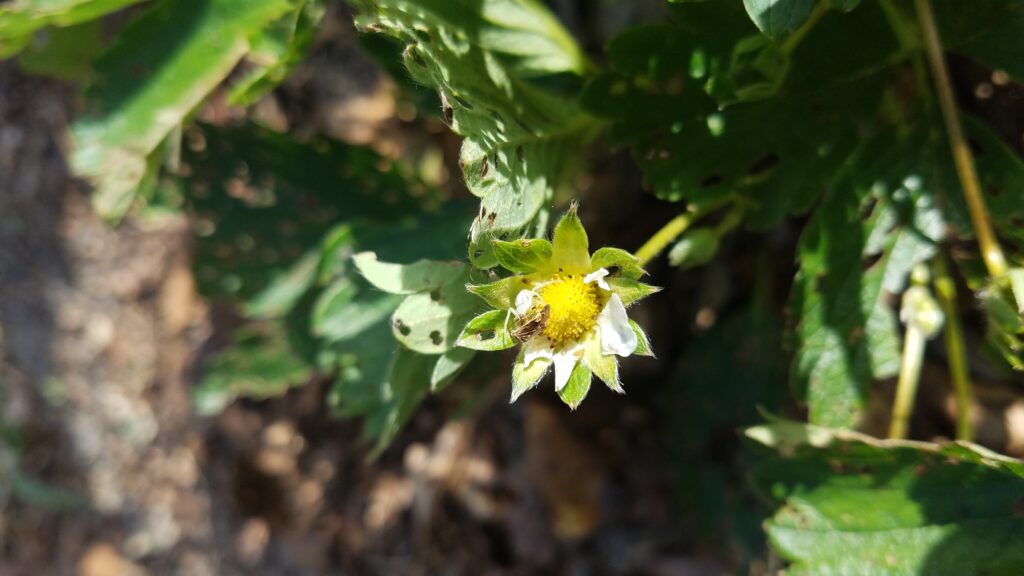Nature’s Pest Control: Crab Spiders
go.ncsu.edu/readext?797578
en Español / em Português
El inglés es el idioma de control de esta página. En la medida en que haya algún conflicto entre la traducción al inglés y la traducción, el inglés prevalece.
Al hacer clic en el enlace de traducción se activa un servicio de traducción gratuito para convertir la página al español. Al igual que con cualquier traducción por Internet, la conversión no es sensible al contexto y puede que no traduzca el texto en su significado original. NC State Extension no garantiza la exactitud del texto traducido. Por favor, tenga en cuenta que algunas aplicaciones y/o servicios pueden no funcionar como se espera cuando se traducen.
Português
Inglês é o idioma de controle desta página. Na medida que haja algum conflito entre o texto original em Inglês e a tradução, o Inglês prevalece.
Ao clicar no link de tradução, um serviço gratuito de tradução será ativado para converter a página para o Português. Como em qualquer tradução pela internet, a conversão não é sensivel ao contexto e pode não ocorrer a tradução para o significado orginal. O serviço de Extensão da Carolina do Norte (NC State Extension) não garante a exatidão do texto traduzido. Por favor, observe que algumas funções ou serviços podem não funcionar como esperado após a tradução.
English
English is the controlling language of this page. To the extent there is any conflict between the English text and the translation, English controls.
Clicking on the translation link activates a free translation service to convert the page to Spanish. As with any Internet translation, the conversion is not context-sensitive and may not translate the text to its original meaning. NC State Extension does not guarantee the accuracy of the translated text. Please note that some applications and/or services may not function as expected when translated.
Collapse ▲In most gardens, if you look close enough, you can see all kinds of interesting things. You might notice a new plant part that you hadn’t noticed before or a bee buzzing around inside of a flower. You might also see a spider. Typically the first instinct is to squish the spider, because there are some that can be quite dangerous for humans. However, not all spiders are harmful. Crab spiders (Family Thomisidae) for instance are a beneficial spider. Some of the genera of this family can be found on tree bark or on the ground, but there are some within this family that will hide inside white or yellow flowers and ambush prey that comes to feed on the flower or the pollen.
The Goldenrod Crab Spider (Misumena vatia) will change its color by producing or excreting a yellow pigment. It takes 6 days for the spider to turn white, whereas it takes 10-25 days for the spider to turn yellow, because the process for producing the pigment takes longer than the process of excreting it.
You might be thinking, “Wait, if this spider feeds on pollinators, isn’t that a bad thing?” This was my train of thought as well, but the presence of a predator causes pollinator species to develop helpful traits over several generations, such as stronger eyesight and quick reflexes. This ultimately benefits the pollinator species and allows them to better defend themselves against other predators.
These little spiders also feed on pest insects, such as the Tarnished Plant Bug (Lygus lineolaris). The Tarnished Plant Bug is a pest that has piercing, sucking mouth parts and feeds on parts of a plant that are rapidly growing, like the new growth of a bud or flower. This can create big problems for growers of strawberries or other crops that depend on proper flower development. Crab spiders can serve as a form of biological control against such pests and keep the ecosystem in balance.
Next time you’re in your garden, look closely at your flowers. There might be a critter hiding out waiting to help you control an unwanted pest!




